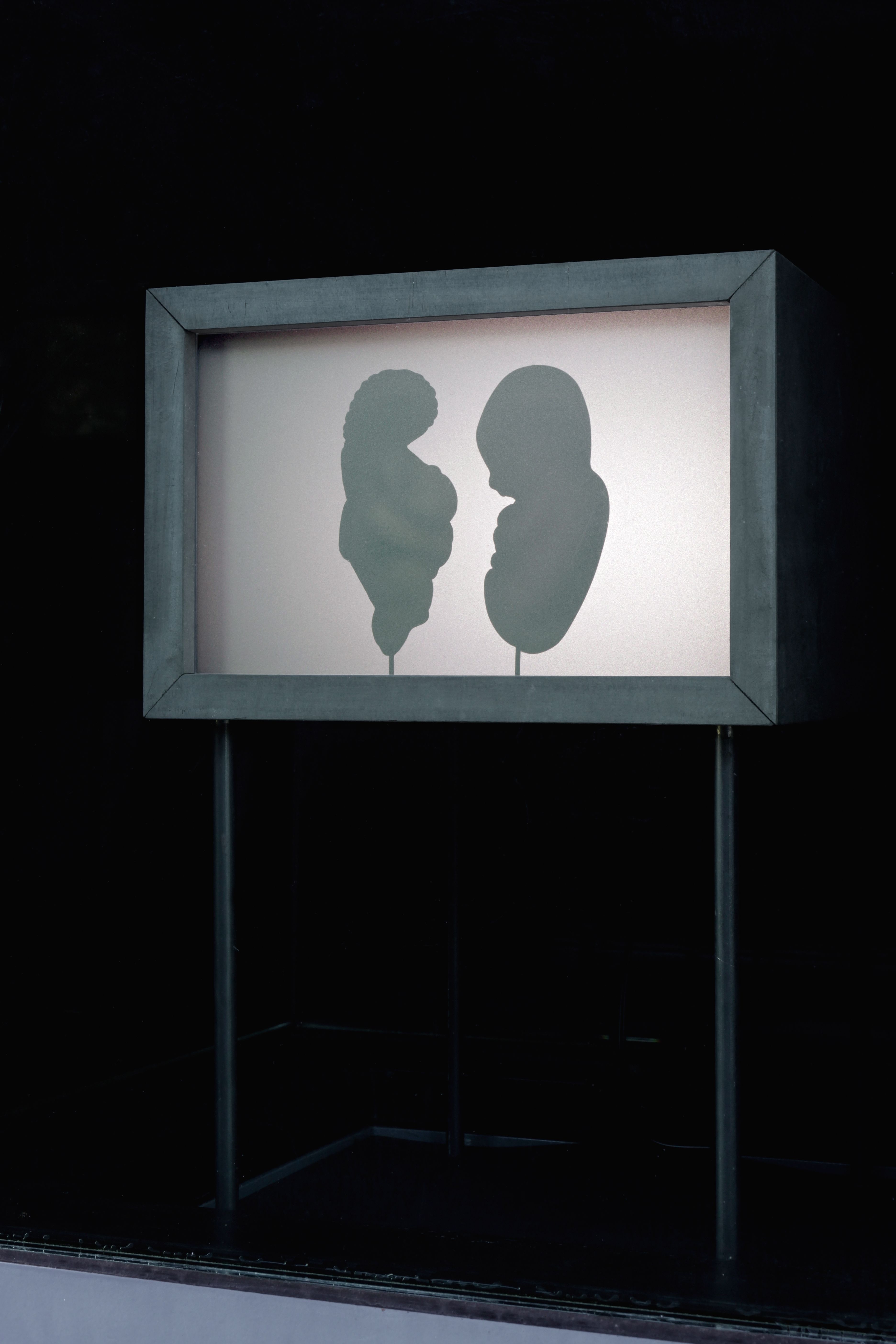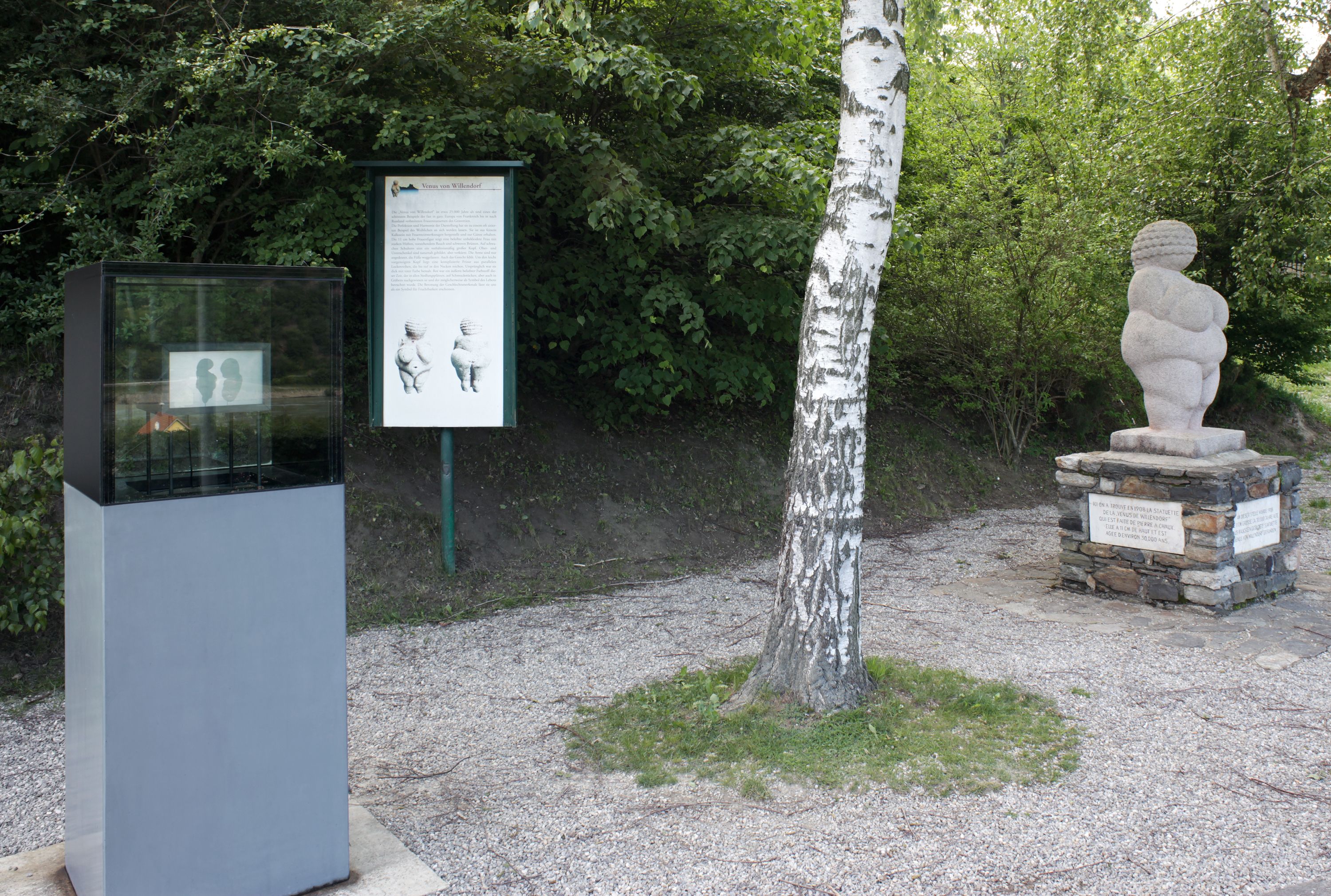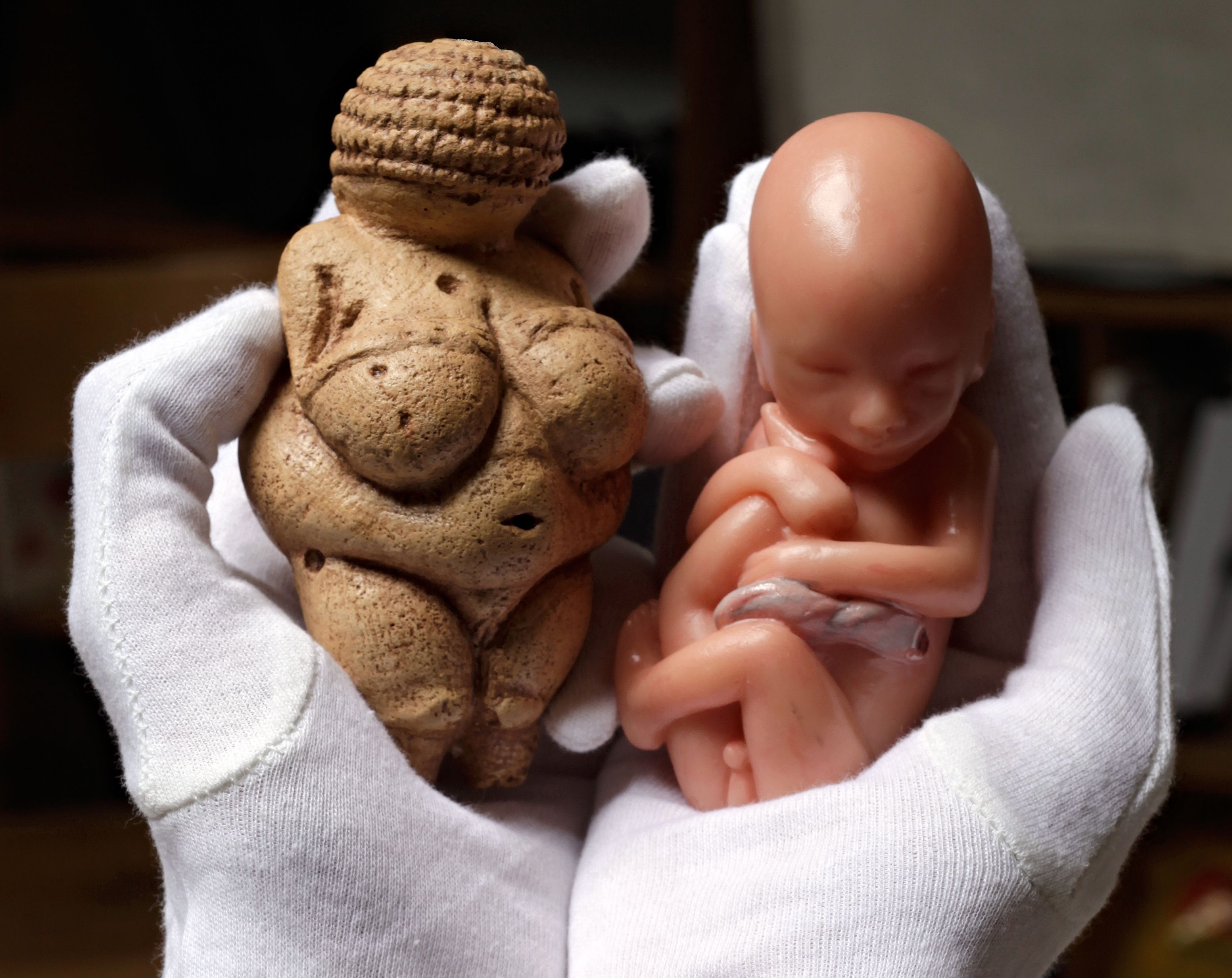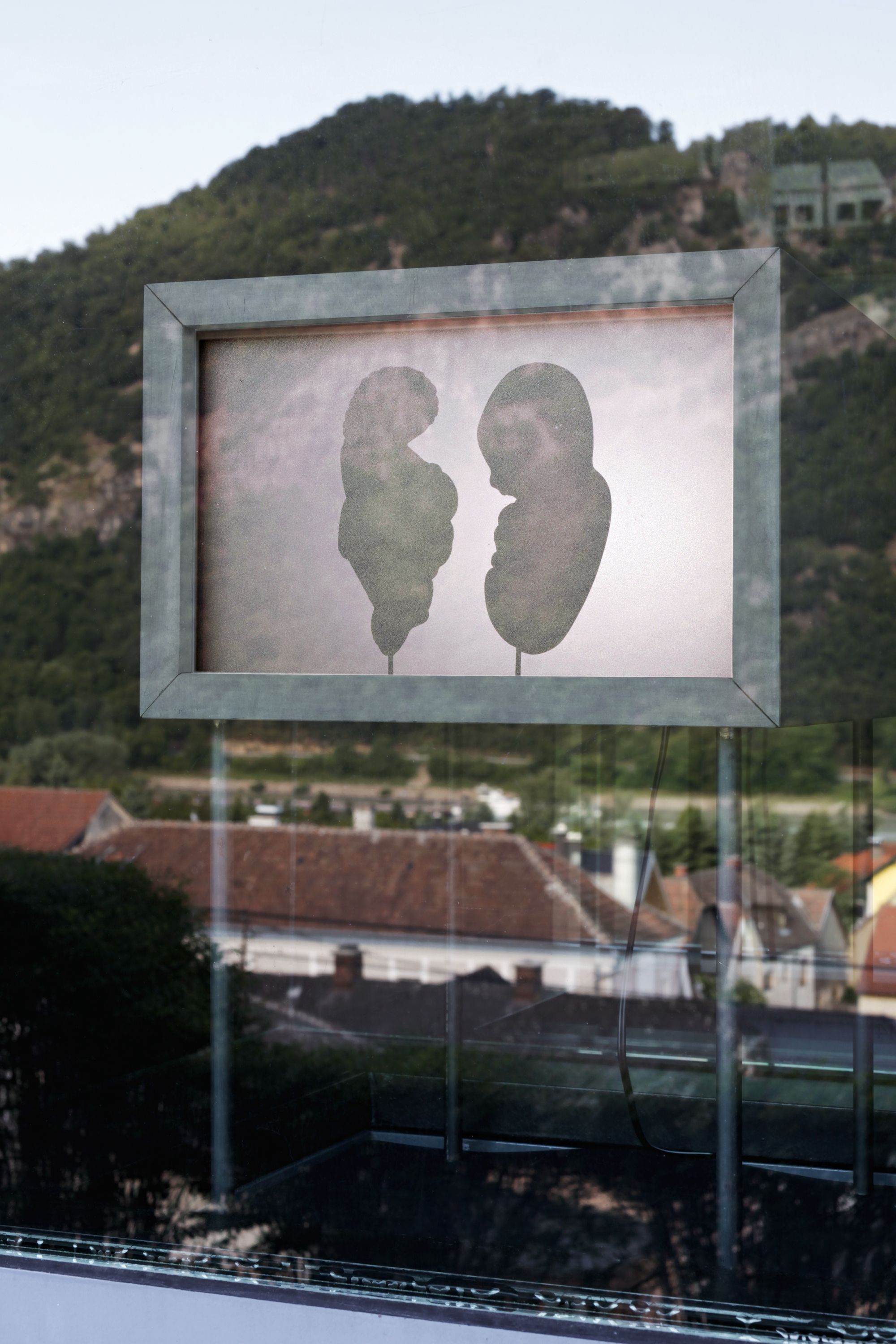Anna Artaker
:
Conceptus
Back
Information
We can only speculate about the Venus of Willendorf's significance and purpose. It is this ambiguity – this difficulty to establish an exact context – that Anna Artaker addresses in her work CONCEPTUS. She juxtaposes the Venus replica, which is eleven centimeters long, with a model of a four-month-old fetus on the scale of 1:1.
The Venus of Willendorf is roughly 25,000 years old. It was excavated in 1908, during the era of industrialization when modernization meant connecting different regions by rail. During the excavation work, a railway laborer discovered a small figure that made him marvel: a naked woman with curly hair or some kind of head gear, with thin arms and supple breasts. The realistic portrayal of the figure indicates that it was modelled after a real person. This small object left behind by our ancestors dates back to a time that is beyond our imagination – a time when the landscape in this region consisted primarily of steppe, and people traveled on paths by foot. Although it was possible to determine the figurine’s age by examining layers of earth, we can only speculate about its significance and purpose. Many theories have sprung up over the years. For example, simply referring to the 25,000-year-old figurine as "Venus" reminds us of the much younger Venus of antiquity – the Roman goddess of love, erotic desire and beauty – and suggests the idea that the two Venuses are "sisters". According to other interpretations, the figurine was a kind of talisman – for example, for a twin sibling that had passed away. It is this ambiguity – this difficulty to establish an exact context – that Anna Artaker addresses in her work CONCEPTUS. She juxtaposes the Venus replica, which is eleven centimeters long, with a model of a four-month-old fetus on the scale of 1:1. Anna Artaker explained that "this model is also used in medical training. Like Venus, it represents the reproduction of the human species or the survival of the human race over centuries – from the Venus of Willendorf to the medical model of the fetus." Artaker placed these two figures in a shadow puppet theater peep box, where a spotlight makes the figures visible as shadows. From the other side of the box, we can see the actual arranged figures. This is an entirely new reference in this exhibition series, in which the objective is to explore new approaches to the artefact of the Venus of Willendorf.
Similar to the Rorschach test, in which a person’s interpretation of a picture is used as a method to reveal something about their personality, Artaker tries to make a statement in her work about the society she is living in. By analyzing how we deal with history, she demonstrates the complexity and interrelatedness of the relationship between a model and representation. She also questions her own means of analysis and interpretation. Desire drives us to trace the history of the Venus of Willendorf because we long for new ways to understand her time. It is this lack of certainty that animates us to continue to think, imagine and discuss.
(Anamarija Batista)
Images (6)






